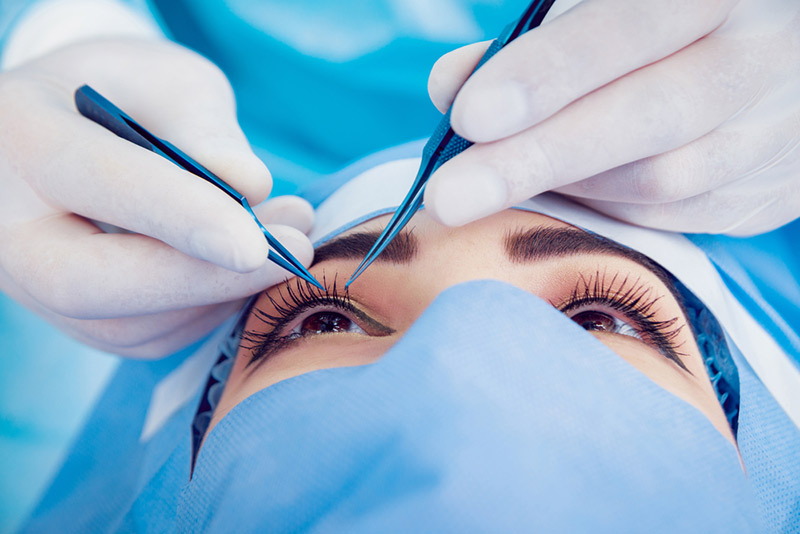ADDRESS:
Degtyarevskaya st., 48
Kyiv
RECEPTION OF PATIENTS:
Mon-Fri 8:00-18:00
Sat 9:00-18:00
Menu
ADDRESS:
Degtyarevskaya st., 48
Kyiv
RECEPTION OF PATIENTS:
Mon-Fri 8:00-18:00
Sat 9:00-18:00
Home » Upper eyelid surgery – upper blepharoplasty
The first age-related changes are most noticeable on the face. The age of the eyes is very revealing, namely the appearance of sagging folds of skin around them, excessive fat deposits, and ptosis of the outer corners. The freshness and openness of gaze characteristic of a young face is lost. Cosmetics are powerless in this case.
Plastic surgery will help to effectively solve this aesthetic problem.
Upper blepharoplasty is performed to correct the upper eyelid area. The purpose of this surgical intervention is to excise excess skin tissue, remove part of the fatty tissue or distribute it more evenly, and tighten muscle fibers. There are no specific age criteria for this procedure, but most often the area around the eyes is corrected after 35 years.
The tissues around the eyes have a special structure, which is why they succumb to the aging process faster than other areas. Correction of the upper eyelids is carried out when the following changes appear:
The intervention is not indicated for heart disease, endocrine disorders, oncology, problems with blood clotting, pregnancy, lactation. Blepharoplasty is not performed during periods of exacerbation of diseases or in the presence of infection. Contraindications also include glaucoma, dry eye syndrome, and retinal detachment.

After consultation with a plastic surgeon, patients undergo a mandatory examination by an ophthalmologist, a general examination and undergo the necessary tests. It is recommended to avoid smoking 14-21 days before and after surgery. You should inform your doctor if you are taking any medications.
The intervention is performed under general anesthesia or local anesthesia. The operation lasts from half an hour to an hour.
During the operation the following actions are performed:
Blepharoplasty is performed in a hospital or on an outpatient basis. The patient is observed for 1 to 3 days (inpatient), and after an outpatient operation, you can go home a few hours later.
RECEPTION OF PATIENTS:
Mon-Fri 8:00-18:00 | Sat 9:00-18:00
ADDRESS:
Degtyarevskaya st., 48, Kyiv
The use of content and photo materials of the site without the consent of the copyright holder is not allowed!
License – order of the Ministry of Health of Ukraine dated June 1, 2017. No. 592
License for Dentistry – order of the Ministry of Health of Ukraine dated December 15, 2022 No. 2270
© 2023 | AVICENNA MED – center for Pronovative Medicine. Kyiv, Ukraine
RECEPTION OF PATIENTS:
Mon-Fri 8:00-18:00 Sat 9:00-18:00
ADDRESS:
Degtyarevskaya st., 48, Kyiv
License – order of the Ministry of Health of Ukraine dated June 1, 2017. No. 592
License for Dentistry – order of the Ministry of Health of Ukraine dated December 15, 2022 No. 2270
The use of content and photo materials of the site without the consent of the copyright holder is not allowed!
© 2023 | AVICENNA MED – center for Pronovative Medicine. Kyiv, Ukraine